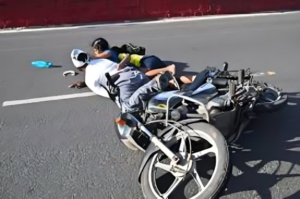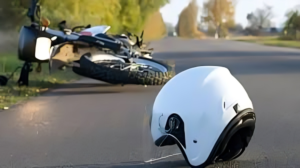Anti-Lock Braking System Mandatory for All Two-Wheelers from January 2026
Introduction
From January 1, 2026, every new two-wheeler sold in India—regardless of engine capacity—will be equipped with an Anti‑Lock Braking System (ABS). This landmark regulation by the Ministry of Road Transport and Highways aims to significantly reduce accidents and fatalities among motorcyclists and scooter riders. By preventing wheel lock‑up under hard braking, ABS enhances vehicle control, shortens stopping distances on slippery surfaces, and builds rider confidence.

The Importance of ABS for Two‑Wheelers
Riding a two‑wheeler inherently carries more risk than driving a car. In 2022, two‑wheelers accounted for nearly 20% of all road accidents in India, with fatalities rising by 8% to about 75,000 lives lost. Single‑channel ABS, which modulates brake pressure to prevent wheel lock‑up, has already been mandatory for bikes above 125 cc since 2019. Extending this requirement to entry‑level scooters and motorcycles means even first‑time riders will benefit from enhanced safety.
Key benefits of ABS on two‑wheelers include:
- Improved stability: Prevents skidding on wet or uneven roads.
- Shorter braking distance: Especially on slippery surfaces.
- Rider confidence: Encourages smoother, more controlled stops under stress.
- Accident reduction: Studies show ABS can cut accident rates by up to 30% among new riders.
Mandatory Helmet Provision
In tandem with ABS rules, manufacturers and dealers must supply two Bureau of Indian Standards (BIS)‑certified helmets—one for the rider and one for the pillion passenger—at the point of sale. Proper head protection is the single most effective way to reduce the severity of head injuries in a crash. By ensuring every two‑wheeler purchase comes with two high‑quality helmets, the regulation addresses both braking and protective equipment in one sweep.

Real‑Life Impact: A Rider’s Story
Rahul, a delivery rider in Pune, recalls a near‑miss on a rain‑soaked road last monsoon. “My front wheel locked up when I braked suddenly, and I slid across the asphalt,” he says. “If I’d had ABS, I’m sure I wouldn’t have lost control.” Under the new rule, riders like Rahul will have that safety net built into their machines, making commutes and deliveries safer, day in and day out.
Economic and Industry Implications
Industry analysts estimate the inclusion of ABS and two helmets will raise the ex‑factory price of a new two‑wheeler by approximately ₹2,500–3,000. While this marginal increase may concern budget‑minded buyers, the long‑term savings—in reduced medical costs and fewer crash‑related repairs—far outweigh the upfront cost. Manufacturers are already gearing up: major brands have begun retooling assembly lines, and smaller players are partnering with ABS suppliers to meet the January 2026 deadline seamlessly.
Preparing for the Transition
For dealers and manufacturers:
- Inventory audit: Ensure ABS‑compatible brake components stock.
- Supplier contracts: Secure partnerships with certified ABS module producers.
- Staff training: Educate sales teams on ABS benefits to communicate value to customers.
- Helmet logistics: Align with BIS‑approved helmet manufacturers to guarantee timely supply.
For riders and buyers:
- Budget planning: Factor in the modest price increase for upgraded safety features.
- Awareness: Learn how ABS works—proper braking technique still matters.
- Helmet fitting: Always wear the supplied helmets correctly, adjusting straps and ensuring snug fit.
Conclusion
The January 2026 mandate for ABS on all two‑wheelers represents a bold step toward safer roads in India. By combining advanced braking technology with compulsory helmet provision, the government is addressing two critical factors in rider safety. While there is a slight uptick in manufacturing and purchase costs, the potential to save thousands of lives and prevent countless injuries makes this regulation a game‑changer. As the deadline approaches, collaboration between policymakers, manufacturers, dealers, and riders will be key to a smooth transition and a safer future for everyone on two wheels.